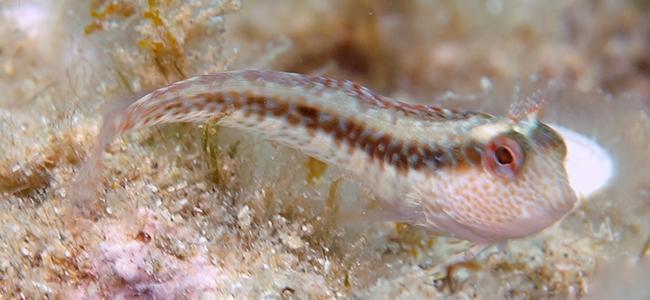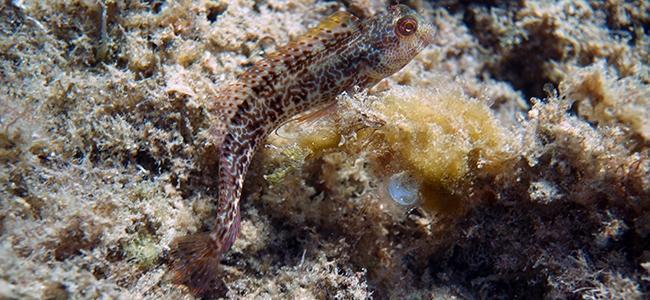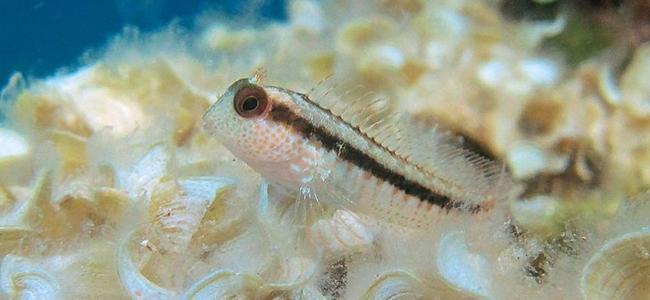The combtooth blennies (Blenniidae) are a family of predominantly marine fish from tropical and subtropical waters of the Atlantic, Indian and Pacific Oceans. Characteristic of this family of fishes are an elongated body (maximum 55 cm, although mostly below 15 cm) with striking color patterns and a flat head crowned by eyes positioned on the top of the head. Another characteristic of the combtooth blennies is the absence of a swimming bladder in adult specimens. This conditions the habitats where they live, finding them on the rocky bottoms of aquatic ecosystems (benthic), where they feed on small Algae and invertebrates.
The body of the combtooth blennies has no scales, that is to say they are considered to have a naked body. The pelvic fins, which have a short spine embedded and between 2 and 4 spokes, are located before the pectoral fins, which have between 10 and 18 unbranched spokes. The dorsal fins, are formed by between 3 and 17 flexible spines, followed by between 9 and 119 spokes (in most species, there are always fewer spines than spokes). The anal fin has two spines, the first being hidden under the genital tissue in females). Finally, the radii of the caudal fin may or may not be branched.
There are species of combtooth blennies that have a peculiar behavior. These are species that establish mimetic associations with other fish by posing as the species that maintains a symbiosis association. For example, the blenid Aspidontus taeniatus, has an extremely similar appearance to the cleaning blenid Labroides dimidiatus. Not only the similarity is in the shape of the body and its colors, but it also copies the movements that these blenid cleaners make as a lure to attract the fish to their cleaning stations. Well, Aspidontus taeniatus posing as Labroides dimidiatus tricks the 'client' species into thinking that it will offer them a cleaning service, but in reality what it will do is tear off pieces of healthy skin, scales and mucus from which they feed, and quickly flee to safety to avoid the reaction of the 'client' species.
There are 59 genera described within the family of blennies, with a total of 397 different species.






